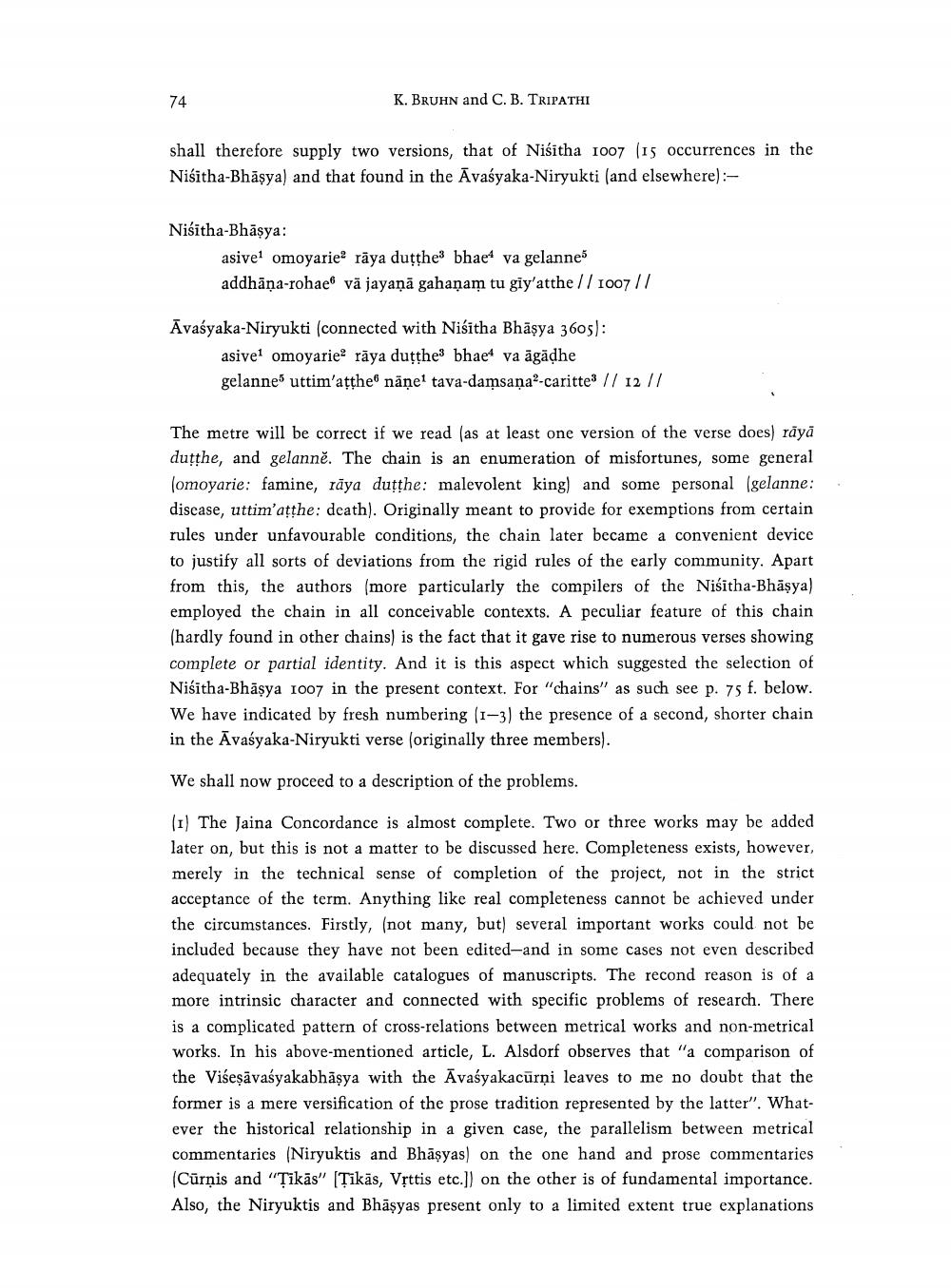Book Title: Jaina Concordance And Bhasya Concordance Author(s): K Bruhn, C B Tripathi Publisher: K Bruhn, C B Tripathi View full book textPage 7
________________ 74 K. BRUHN and C. B. TRIPATHI shall therefore supply two versions, that of Niśitha 1007 (15 occurrences in the Nikitha-Bhasya) and that found in the Avasyaka-Niryukti (and elsewhere]: Nikitha-Bhasya: asive1 omoyarie raya dutthe bhae va gelanne addhana-rohae va jayaṇā gahanam tu gly'atthe // 1007// Avasyaka-Niryukti (connected with Nisitha Bhasya 3605): asive omoyaries raya dutthe bhae va agadhe gelanne uttim'atthe" näne1 tava-damsana-caritte // 12 // The metre will be correct if we read (as at least one version of the verse does) rāyā dutthe, and gelanně. The chain is an enumeration of misfortunes, some general (omoyarie: famine, raya dutthe: malevolent king) and some personal gelanne: disease, uttim'atthe: death). Originally meant to provide for exemptions from certain rules under unfavourable conditions, the chain later became a convenient device to justify all sorts of deviations from the rigid rules of the early community. Apart from this, the authors (more particularly the compilers of the Niśitha-Bhasya) employed the chain in all conceivable contexts. A peculiar feature of this chain (hardly found in other chains) is the fact that it gave rise to numerous verses showing complete or partial identity. And it is this aspect which suggested the selection of Niśitha-Bhāṣya 1007 in the present context. For "chains" as such see p. 75 f. below. We have indicated by fresh numbering (1-3) the presence of a second, shorter chain in the Avasyaka-Niryukti verse (originally three members). We shall now proceed to a description of the problems. (1) The Jaina Concordance is almost complete. Two or three works may be added later on, but this is not a matter to be discussed here. Completeness exists, however, merely in the technical sense of completion of the project, not in the strict acceptance of the term. Anything like real completeness cannot be achieved under the circumstances. Firstly, (not many, but) several important works could not be included because they have not been edited-and in some cases not even described adequately in the available catalogues of manuscripts. The recond reason is of a more intrinsic character and connected with specific problems of research. There is a complicated pattern of cross-relations between metrical works and non-metrical works. In his above-mentioned article, L. Alsdorf observes that "a comparison of the Visesavasyakabhäṣya with the Avaśyakacürni leaves to me no doubt that the former is a mere versification of the prose tradition represented by the latter". Whatever the historical relationship in a given case, the parallelism between metrical commentaries (Niryuktis and Bhāṣyas) on the one hand and prose commentaries (Cūrnis and "Tikās" [Tikās, Vṛttis etc.]) on the other is of fundamental importance. Also, the Niryuktis and Bhāṣyas present only to a limited extent true explanationsPage Navigation
1 ... 5 6 7 8 9 10 11 12 13
